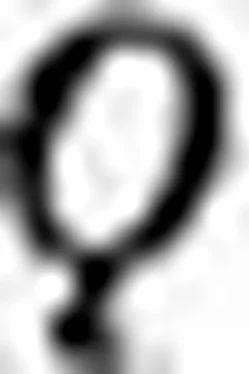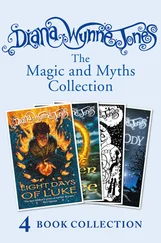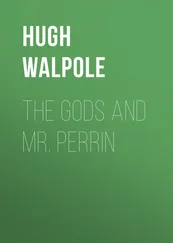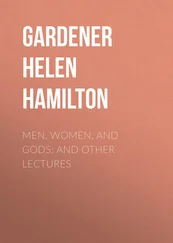Hilda Ellis Davidson - Gods and Myths of Northern Europe
Здесь есть возможность читать онлайн «Hilda Ellis Davidson - Gods and Myths of Northern Europe» весь текст электронной книги совершенно бесплатно (целиком полную версию без сокращений). В некоторых случаях можно слушать аудио, скачать через торрент в формате fb2 и присутствует краткое содержание. Жанр: История, на английском языке. Описание произведения, (предисловие) а так же отзывы посетителей доступны на портале библиотеки ЛибКат.
- Название:Gods and Myths of Northern Europe
- Автор:
- Жанр:
- Год:неизвестен
- ISBN:нет данных
- Рейтинг книги:5 / 5. Голосов: 1
-
Избранное:Добавить в избранное
- Отзывы:
-
Ваша оценка:
- 100
- 1
- 2
- 3
- 4
- 5
Gods and Myths of Northern Europe: краткое содержание, описание и аннотация
Предлагаем к чтению аннотацию, описание, краткое содержание или предисловие (зависит от того, что написал сам автор книги «Gods and Myths of Northern Europe»). Если вы не нашли необходимую информацию о книге — напишите в комментариях, мы постараемся отыскать её.
Gods and Myths of Northern Europe — читать онлайн бесплатно полную книгу (весь текст) целиком
Ниже представлен текст книги, разбитый по страницам. Система сохранения места последней прочитанной страницы, позволяет с удобством читать онлайн бесплатно книгу «Gods and Myths of Northern Europe», без необходимости каждый раз заново искать на чём Вы остановились. Поставьте закладку, и сможете в любой момент перейти на страницу, на которой закончили чтение.
Интервал:
Закладка:
This method of approach, like the others, is most dangerous if carried to excess. We must not assume that all myths have equal value, as some writers of Jung’s school tend to do. Some have come down to us in a childish or distorted form, some have been copied deliberately by artists or writers, and cannot be regarded as genuine myths expressing an inner experience. We must have the necessary knowledge of the sources and the background before we can attempt to assess and interpret the legends themselves. In a number of books on religious imagery Mircea Eliade has put forward an eloquent plea for the discipline of the history of religions rather than that of depth psychology in interpreting the significance of myths.
Indeed the study of the history of religions has made very great progress during recent years. We now know much more than we did about the attitude of early peoples towards the supernatural. Thanks to the work of anthropologists in many different parts of the world, we can now contradict some of the dogmatic theories which were based on insufficient evidence. We can no longer accept the idea that a universal totemism preceded the belief in gods and spirits, as Freud too rashly assumed from the work of early anthropologists like Taylor. We now know that totemism is completely lacking in the life of many of the most primitive tribes. The idea of an impersonal sacred force, like the ‘mana’ of Melanesia, is apparently not the inevitable precursor of the idea of a god, nor is sun-worship the earliest form of recognizable religion everywhere in the world. We have still much to discover, but it now seems safe to say that at the root of religious beliefs there lies the idea of the sacred, of a power outside man and greater than men. This may be embodied in many different forms: in sacred trees or stones, in the person of the divine king, in the mystery of the Christian incarnation. The instinctive sense of this power, recognized in some form wherever men come together, however simple or complex their society may be, appears to be the moving principle of religious belief.
As our knowledge increases, it also becomes evident that certain patterns are present in the mythologies of the world. These can be traced in widely separate regions and at different ages of civilization. The idea of a Sky God, of a distant father in heaven, is gradually emerging as one of the most widespread conceptions in early religion. The Australian aborigines and many African tribes have such a sky god, the Chinese had an ancient sky god, of whom the emperor was the representative on earth, and the Greek Zeus and the Roman Jupiter appear to have developed out of such a conception. In general however the Sky God remained distant and remote from men’s lives. Other manifestations of the divine became of more immediate importance, such as the worship of dead ancestors or of the totem animal of the tribe, or the deities associated with the earth. Besides the Sky God existed the Earth Mother, the earth who gives birth to all, who gives men food and wealth, and who receives them back to herself when life is over. The Earth as bride of the Sky is one of the universal motifs of world mythology, and there are many myths of how these two were once joined together and had to be separated by force when men were created. The Great Goddess of vegetation and harvest was a development of the Earth Mother. She became increasingly important as agriculture developed among men, and flourished in the fertile Mediterranean lands, under such names as Isis, Demeter, and Cybele. Other divine figures have been emphasized in the work of different scholars. Frazer emphasized that of the Dying God, the male deity linked with the Great Mother, who must perish as the world of nature declines in winter to be reborn in the new life of the spring. As Osiris or Tammuz and under many other names he was lamented throughout the ancient world when his time came to perish in the seasonal round, and in spring he became the symbol of new life emerging from the dead. In the theory occurring throughout his books, Dumézil has taught us to see other figures of widespread significance: the Terrible Sovereign, whose powers are due to magic, the Sovereign Law-Giver, and the Warrior God. Thus Jupiter, at first the Sky God, seems to have developed into the Terrible Sovereign, and remains to some extent in opposition to the warrior Mars.
This is so wide a subject that to dwell on it further would be to defer the main purpose of the book. We have to consider the kind of heritage which our forefathers have left us, and we must decide on its nature before we attempt to see it in the light of other mythologies. It is necessary however to realize that such world patterns in religion exist. When we are studying the myths of our own race, there may be parallels in the myths of other peoples which will help us to understand our own more clearly. The realization of this is perhaps the most exciting recent discovery in the history of religions. It helps us to see the myths of the past as man’s attempt to embody his intuitive ideas about the human mind and its environment, to express truths dimly perceived which have roots in his innermost being. Thus the myths may lead us to discover more about our spiritual heritage, and perhaps to realize some of the defects in the spiritual development of the modern world. The study of mythology need no longer be looked on as an escape from reality into the fantasies of primitive peoples, but as a search for the deeper understanding of the human mind. In reaching out to explore the distant hills where the gods dwell and the deeps where the monsters are lurking, we are perhaps discovering the way home.
Chapter 1 - The World of the Northern Gods
I am the child of the Earth and starry Heaven, but my origin is of Heaven alone.
Orphic Grave Tablet
1. The Prose Edda
Christianity was firmly established in north-western Europe in the twelfth century, but there was still interest in the heathen legends of the gods. By then men were secure enough in their faith not to fear a resurgence of the ancient paganism, and felt new stirrings of affection for the old tales, never forgotten by the northern poets. The complex, sophisticated verses of the skaldic poets were very fashionable at the courts of kings and in the halls of cultured men, and these poets relied on the myths as their main source of imagery. Their poetry was filled with allusions to the old stories, some of them mere clichés, some neat and witty, and some retaining real poetic fire. In seventeenth-century England the poet Milton enriched his picture of a Biblical Eden by reference to such legends as the descent of Proserpine to Hades, and he could expect an instant response from readers trained in classical lore. In the same way a medieval Icelandic poet could refer to poetry as the ship of the dwarfs, to gold as the tears of Freyja or the cushion of the dragon Fafnir, and to a sword as the fire of the Valkyries: his audience would comprehend his meaning from their knowledge of the myths. He could do this whether he were praising a loved woman, describing adventures in battle, or expressing his enthusiasm for the cause of Christ, and be confident that his hearers would seize on the imaginative implications of his images.
By the twelfth century it was growing more difficult to do this. The old myths were fading from men’s minds: the churchmen sometimes condemned them as evil, and cultured young men were reared in the new Christian learning instead of the heathen traditions. It therefore occurred to a gifted Icelandic scholar, Snorri Sturluson, that it would be worth while to write a book about these matters before they were utterly lost. Snorri was a man of extraordinary gifts: chieftain, politician, historian, saga-writer, and poet. He planned his work as a handbook for poets and intellectuals, a guide to poetic imagery. Since he was a brilliant stylist, writing in his native Icelandic, it was no dry antiquarian treatise; he told the old tales of the gods with wit, irony, and a lively delight in their imaginative beauty. He called his book the Edda , and it is known as the Prose Edda to distinguish it from a collection of poems with the same name. It is from this book of Snorri’s, written about 1220, that our main impression of northern mythology has been derived.
Читать дальшеИнтервал:
Закладка:
Похожие книги на «Gods and Myths of Northern Europe»
Представляем Вашему вниманию похожие книги на «Gods and Myths of Northern Europe» списком для выбора. Мы отобрали схожую по названию и смыслу литературу в надежде предоставить читателям больше вариантов отыскать новые, интересные, ещё непрочитанные произведения.
Обсуждение, отзывы о книге «Gods and Myths of Northern Europe» и просто собственные мнения читателей. Оставьте ваши комментарии, напишите, что Вы думаете о произведении, его смысле или главных героях. Укажите что конкретно понравилось, а что нет, и почему Вы так считаете.












